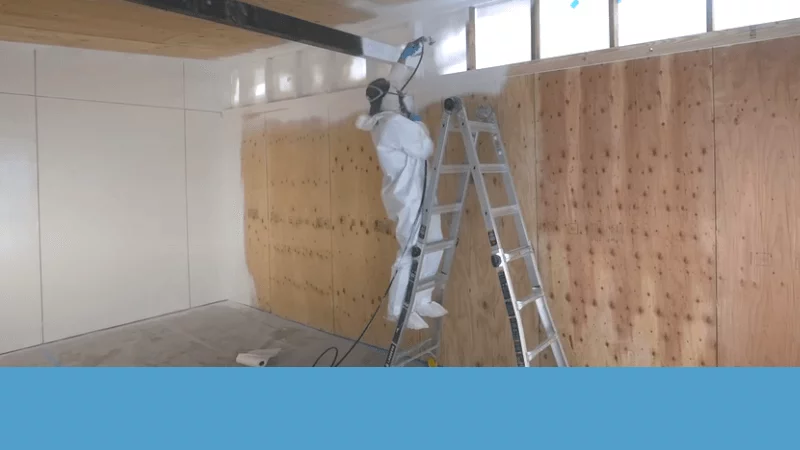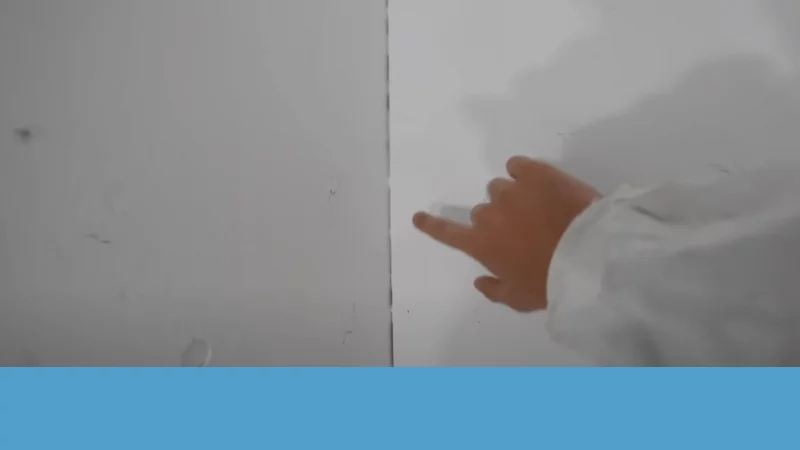Plywood walls are a cost-effective way to enhance your interior decor. However, leaving them unfinished can lead to degradation over time. To ensure their longevity, it’s crucial to finish them with the appropriate techniques. In this article, we will explore one of two effective methods of finishing plywood walls: painting and staining.
What is the best finish for plywood walls?
There are a couple of options when it comes to finishing a plywood wall. The most straightforward one is priming and painting your plywood wall.
Paint is the easiest finish to apply, and it offers a variety of color options to match your interior decor. Additionally, paint is considered the most effective and protective finish out there.
The other option, if you still love colors but hate to obscure the wood figure, stains. You can choose to stain and seal your plywood wall. While this method is as protective as paint, it is not as easy to apply effectively.
How to finish Plywood wall with paint
Paint is the best way to finish your plywood wall, as it can provide three types of protection. Firstly, it protects against UV light, which is notorious for altering wood color and causing surface deterioration.
Secondly, paint offers protection against water and can provide some waterproofing ability, although stagnant water can still damage painted plywood.
Lastly, paint provides protection against mechanical damage, such as scratches. While paint is the easiest finish to apply, applying it wrong can lead to a bad finish job that won’t last. Here’s how to paint your plywood walls.
Priming a plywood wall

Priming is a crucial step in the painting process, as it helps the paint adhere well to the wood and prevents it from peeling off. A primer is also effective in preventing the wood surface from absorbing the paint. Without priming, the paint may not adhere properly to the wood and may peel off or flake over time, leading to an unattractive finish. Priming can be rolled, brushed or sprayed. Spraying is the firstest but it does require spraying equipment and understanding the basics of thinning primer and paint.
How many coats of primer for drywall plywood?
Usually, one coat of primer is enough. However, it’s essential to keep in mind that every job is unique, and it’s always best to inspect the first coat of primer and make a judgment as to whether another coat is necessary. This is particularly important when working with lighter colors of paint, as they don’t conceal stains or imperfections easily. By checking the appearance of the first coat, you can ensure that your paint will look even and polished and that the finished product will be of the highest quality.
Painting your plywood walls
After the primer has dried, it’s time to start painting your plywood walls. You can use a brush, roller, or sprayer to apply the paint, depending on your preference. It’s crucial to inspect your primed wall to ensure that it’s in perfect condition and that no spots were missed.

If you notice any gaps in the corners, you can fill them in using latex caulk. This will create a smooth and polished finish and prevent any future problems with peeling or cracking.
Once the surface is ready you can proceed to apply the paint. If you need to apply additional coats of paint, it’s essential to ensure that the previous coat is completely dry before applying the next coat.
How to Finish Plywood Walls: Conclusion
In conclusion, finishing plywood walls can transform a space from drab to fab. Whether you choose to prime and paint or stain and seal, the right finish can protect your plywood walls and enhance your decor. With the right tools and techniques, you can achieve a professional-looking finish that will last for years to come. So, don’t be afraid to get creative and experiment with different finishes to achieve the look you desire
Recommended Reading
Finishing plywood floors